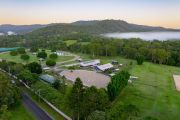
For Melbourne office tenants, it's going to get worse before it gets better
For tenants seeking to set up a new city office, it is about to get worse before it gets better.
More corporate occupants leased space in Melbourne than in any other capital city in the second half of last year – driving vacancy down to a cyclically low 6.4 per cent and boosting asking rents, particularly for premium-quality stock, which reported an 8.5 per cent value surge in the December-2016 quarter alone.
City office rents are expected to continue to increase almost across the board this year and next (prime quality rentals now average $387 a square metre per annum, according to agency Knight Frank, their highest level on record).
However, the value of tenant incentives – an industry discount landlords offer tenants for signing a lease (and which is often delivered in the form of a paid fitout) – is expected to drop across all grades.
Tenants seeking the city’s “premium” (highest quality) stock will be most affected, with Colliers International estimating incentives will dip to below 20 per cent in 2019, down from the current rate of between 28 and 32 per cent.
The Melbourne CBD office leasing environment – described by some as a “landlords market” – exists because developers have been too slow to start building new offices in Melbourne’s city.
On top of that, several large offices were withdrawn from the leasing sector for renovation or redevelopment, including former KPMG space at 161 Collins Street and 477 Collins Street.
As tenants relocate to new buildings, Colliers is expecting “backfill” led vacancy at 447 Collins Street in 2019 and 80 Collins Street South (2020).
“Tenants looking for space this year will find their options severely constrained as the next tranche of new supply does not hit the market until early 2018,” Colliers national director of research, Anneke Thompson, said. “We expect that by the middle of 2017, the vacancy rate will be as low as 4.2 per cent.”
“The first completion in the next cycle is likely to be 664 Collins Street, a 25,000-square-metre building with pre-commitments to Pitcher Partners (8000 square metres) and Exxon Mobil (7100 square metres,” Colliers said in its latest Melbourne CBD research report.
“One Melbourne Quarter (26,400 square metres) will follow, which currently has 13,000 square metres of pre-commitment to Lend Lease and ARUP.
“Tower 5 at Collins Square (36,000 square metres) is also likely to be complete in late 2018, with developer Walker Corporation believed to have secured Transurban to 14,100 square metres, leaving 22,000 square metres available”.
Investa’s head of research and strategy David Cannington said it was the combination of solid absorption and strong capital growth that activated what is the largest building boom since the early 1990s, of Melbourne CBD offices.
Investa calculates that some 370,000 square metres of approved new office space is likely to be added to the Melbourne CBD office market over the next five years.
“Looking through the severe shortfall of new office space in 2017, driving tighter leasing market conditions over the coming 12-18 months, a surge in new office supply is fast approaching,” Mr Cannington said.
“Along the Collins Street spine of the CBD alone, around 200,000 square metres of new office space is currently under construction and is due for completion from 2018-2020”.
Investa expects that by 2020 Melbourne will be home to the largest CBD office market in Australia – but whether landlords and commercial leasing agents will be celebrating that milestone, remains to be seen.
Agents are expecting a significant amount of “backfill” vacant space to be filled, when the tenants who have pre-committed to these new offices under construction, move in.
“The outlook for office leasing conditions in Melbourne is likely to soften rapidly from 2019 with the vacancy rate expected to increase to a 20-year high of over 20 per cent by 2020,” Mr Cannington said.











